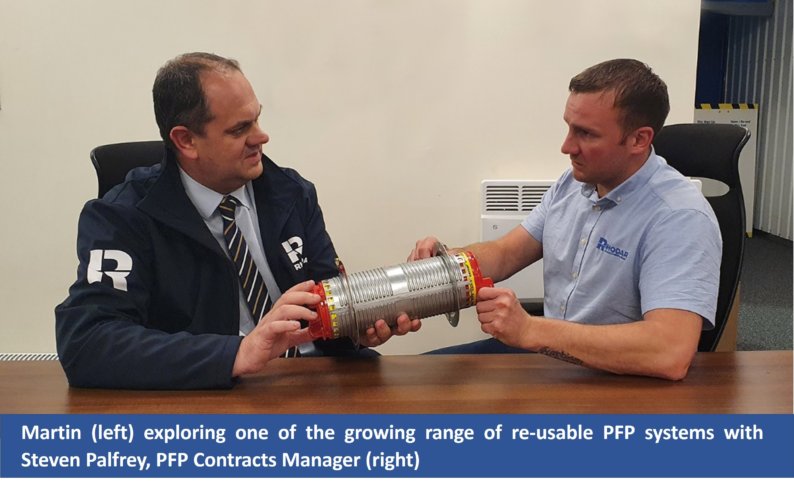The positive environmental impacts of Passive Fire Protection (PFP)
Posted on in Company News

Martin Buckroyd, Rhodar Fire Division’s Senior Technical Manager, explores the impact of the recent National Infrastructure Commission Report, which advises that both industries and taxpayers will effectively need to pay circa £40bn per year on carbon reduction by 2050 as part of the UK Government’s drive towards ‘Net Zero’.
Martin observed that the government’s infrastructure adviser recently announced: ‘It is expected that organisations could face fines if they fail to mitigate all the carbon they emit into the atmosphere.
The National Infrastructure Commission said that the government should place obligations on polluters to cover the cost of greenhouse gas removals or face penalties.
The UK currently produces around 500 million tonnes of carbon a year, but green initiatives/adaptations across the economy are expected to reduce this to approximately 100 mega-tonnes by the deadline.
With the nationwide drive for business and industry to meet the net zero targets by 2050, many building owners and estates managers are asking what actions can be taken to achieve this in less than 30 years, to make their buildings more energy efficient.
It’s an ambitious goal, which poses a significant challenge to be achieved in a relatively short timescale.
Whilst the policy makers focus their attention on the building and construction products required for a net zero future, how can we address the issues faced by current buildings and infrastructures across the UK?
We should be examining the component elements used within the infrastructure of existing buildings to provide them with a more sustainable future.
Building Services - addressing the PFP sustainability issue
The continual requirement for upgrading or installing new services within a building, in particular power and data cabling, poses a significant issue when these services are required to penetrate through the fire-rated elements of the building’s structure.
Industry standard fire rated compartmentation seals within a building are typically constructed from gypsum or cementitious mortars, or mineral-wool based materials.
The production process to manufacture these systems has a significant detrimental environmental effect from inception, starting with the mining of the raw materials, through to the high energy consumption of the manufacturing plants where they are transformed into the finished product, before finally ending in landfill at the end of their working life.
Due to the required strict and regimented testing of traditional fire seals, it’s almost impossible to re-penetrate them to allow for new services to be installed. Compliance dictates that the seal must be fully removed and disposed to landfill, and re-instated, typically, with the same material. This single-use disposable approach is both costly to the environment and to building owners’ allocated budgets.
A much more sustainable approach is therefore required to break this cycle - and some of the more pro-active manufacturers of passive fire products have started to respond to this need.
The introduction of next generation, sustainable Innovations
A new generation of passive fire protection products, which have a negligible impact to the environment, from ‘cradle-to-grave’, have begun to arrive on the market.
These energy conscious manufacturers have already achieved net zero status and obtained the ISO50001 Energy Management Systems accreditation.
The products themselves have a much longer working life expectancy, when set against the traditional firestopping products, and are adaptable to allow additional services to be introduced at any point during the product’s expected working life.
Designed to meet the demanding environmental requirements set out by the Scandinavian countries, this new generation of products can solve a wide range of standard and bespoke applications.

Correct installation by a competent approved installation company can also assist in reducing the energy required to heat a building, thereby increasing the buildings energy efficiency.
As part of our drive to actively promote and expand the use of these environmentally sustainable PFP solutions, Rhodar is increasingly offering these alternative products within our proposals to clients – where an initial small uplift in material cost is far outweighed against the re-use potential and the reduced lifetime cost of the solution to a building’s owner.
If you require support & guidance on how this new approach could allow you to take great strides forward in reducing the carbon footprint of your estate, Rhodar’s Passive Fire Protection Technical Services team is available at fireprotection@rhodar.co.uk
Go Back